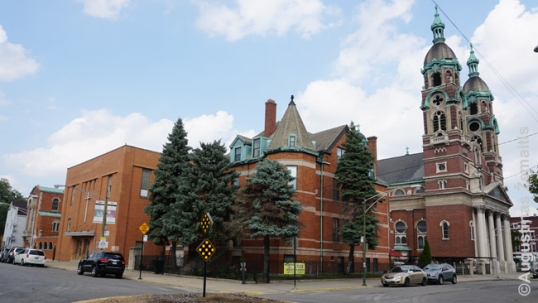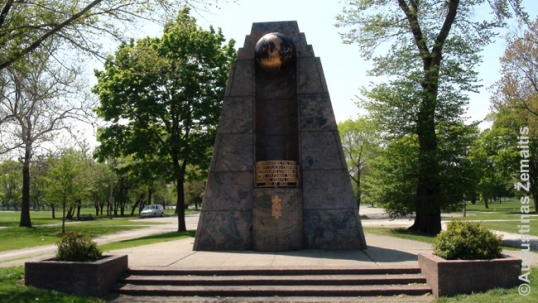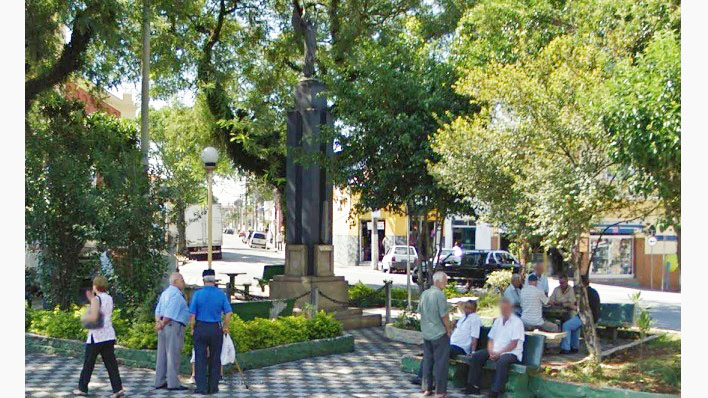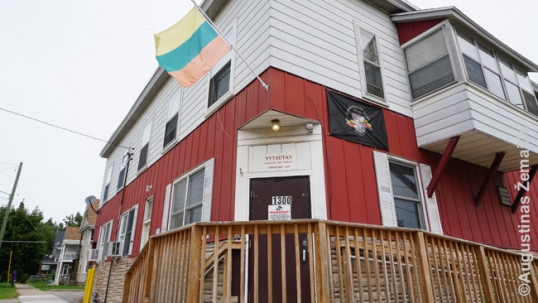Lithuanian districts abroad
Over 1 million Lithuanians live abroad. However, no foreign megalopolis has a true Lithuanian district where Lithuanians would make the majority of population. In the past there were such "Little Lithuanias" and "Lithuanian Villages" and one may still see reminiscences in their architecture and street names.
Starting in the 19th-century Lithuanian districts formed around Lithuanian churches in foreign countries where the Lithuanians emigrated to. The church would have been constructed where there was already a Lithuanian community. After the church opened, even more families would move in, establishing Lithuanian institutions and businesses. At that time, even non-religious Lithuanians would move in just to be among other Lithuanians, with secular institutions often established next to the churches.
The prime migrant destination of the era was the USA. It also became the location of the majority of Lithuanian districts. ~1950 many Lithuanian districts were rejuvenated by newly-arriving refugees from Lithuania (after Lithuania was occupied by the Soviet Union). ~1960-~1980, however, the Lithuanian districts disintegrated due to other minorities (primarily Blacks, Hispanics) moving in and Lithuanians moving out. However even today more Lithuanians (mostly elderly) live in such "historic districts" than in any other particular areas of the same city. Lithuanian churches are in many cases still open but few other institutions remain (just an occasional Lithuanian club, restaurant or bar). The past is more visible in Lithuanian monuments, crosses, and a few Lithuanian-themed street names.

At the heart of the Lithuanian districts would be a Lithuanian church and, next to it, various other institutions such as schools, parish houses. Here, Back of the Yards Lithuanian complex is pictured.
The most famous Lithuanian districts in foreign countries
Chicago, which absorbed ~100 000 Lithuanian immigrants, had more than a single Lithuanian district. Marquette Park was, however, the best known among them as it housed over 30 000 Lithuanians and well up to 1975 Lithuanians made the majority there. Unlike many earlier Lithuanian districts, this one was rich as it housed intellectuals forced out of their homeland by the Soviets rather than poor economic migrants. Today the district is Black-majority but some Lithuanian details remain (e.g. the Lithuanian church is open, a monument for Darius and Girėnas still stands).

Darius and Girėnas memorial in Chicago Marquette Park
The remains of Lithuanian districts may be also found in Baltimore, Detroit, Cleveland, Brockton, Worcester and elsewhere. One of best-surviving Lithuanian districts in the USA is in Grand Rapids, where 3 out of 4 original Lithuanian clubs still operate. In South America, a historic Lithuanian district exists in Sao Paulo (Brazil). Where the Lithuanian communities were smaller they shared their districts with other imigrant nations, e.g. Cerro in Montevideo (Uruguay).

Lithuanian Freedom statue in the Praca Republica Lituania at Sao Paulo, Brazil. This is the heart of the furthest Lithuanian district, over 11 000 km away from Vilnius. Google Street View.
The end of Lithuanian districts
The level to which Lithuanian districts disintegrated depended on how did that happen.
*The worst cases were where Blacks moved in: most Lithuanians than left quickly due to massive crime rates and, as Blacks were non-Catholic, even the Lithuanian Catholic churches had to close doors. Examples could be the Lithuanian districts of Brockton, Cleveland (St. George church) and Sothern Chicago.

Abandoned Lithuanian pub in Marquette Park. After the district became Black, Lithuanian businesses had to close due to insecurity and clients moving out
*A better-case-scenario was if the Hispanics would move in: the crime rates would increase not so much and, as Hispanics were Catholic, they would join Lithuanian churches and help keep them open, this way also helping at least some Lithuanians decide to stay "near their church" (however, new Lithuanians would not move in to such districts and the youth would move out, making them still prone to die out). Examples of such districts are Brighton Park and Cicero of Chicago.

Cicero Lithuanian church still operates, although the majority of masses are now in Spanish and only a few in Lithuanian (2019)
*The best-case scenario was that of slow assimilation: with no "white flight", Lithuanians would remain, however, with new generations likely speaking English at home and marrying non-Lithuanians. In these areas, many Lithuanian institutions would remain, although the importance of Lithuanian activities would slowly dissipate. Examples of such districts are in South America as well as the US cities of Grand Rapids, Dayton.

Grand Rapids Lithuanian club that operates for over 100 years. The same district has two other Lithuanian clubs in vicinity as well as a Lithuanian church, all about a century old and going on
Today the Lithuanian emigration reached epic proportions but Lithuanian districts are not developing. This was influenced by less religiosity (hit by Soviet atheism) - Lithuanians no longer build churches that would serve as their community hub. Thus they spread across entire cities. For example, some say Castleknock is a Lithuanian district of Dublin, however, merely 10% of its population are Lithuanians. In London, some districts are more Lithuanian than others but no borough has more than a few percent Lithuanians.
Lithuanian districts were always important to safeguard Lituanity. When many Lithuanians live in a single place there are many opportunities to speak Lithuanian, share the cultural traditions. Lithuanian districts however never precluded from also respecting the culture of the local country. Many Lithuanian Americans, such as Valdas Adamkus, had successful careers outside the limits of the ethnic community.
Article by ©Augustinas Žemaitis.






April 21st, 2017 - 19:30
Grand Rapids, Michigan, also had a large Lithuanian immigrant neighborhood on the northwest side.